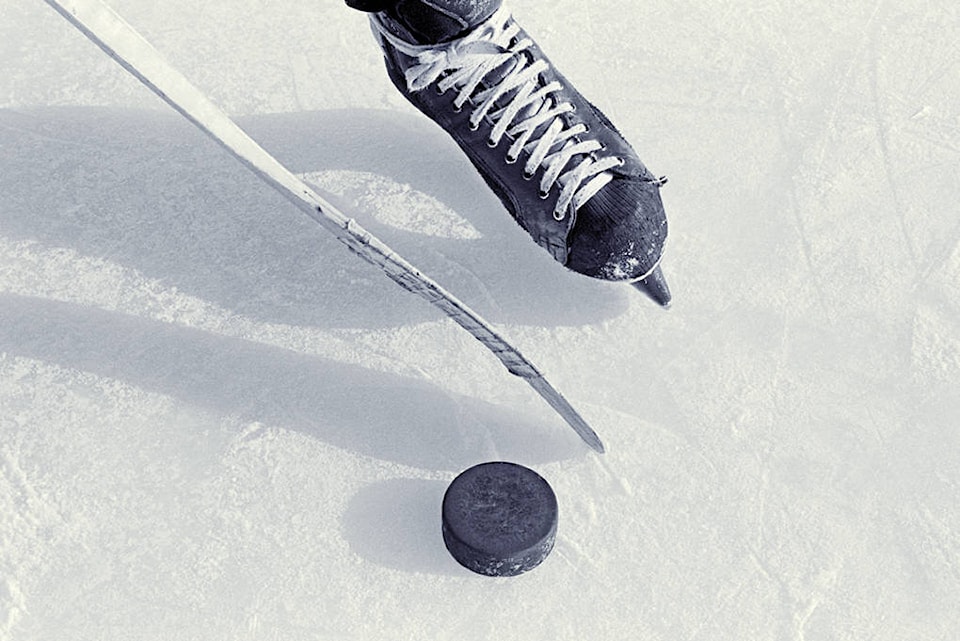An NHL game called in Plains Cree is a step toward keeping Indigenous languages alive, says a hockey analyst.
Former NHL centre John Chabot will join play-by-play announcer Clarence Iron, musician Earl Wood and Cree teacher Jason Chamakese in a Winnipeg studio on Sunday.
The panel will provide commentary and analysis of a game between the Montreal Canadiens and Carolina Hurricanes for the Aboriginal Peoples Television Network.
“When you look at people’s claims to heritage and traditions, it all goes back to language,” Chabot told The Canadian Press on Friday.
“We’re trying to re-introduce our languages into a lot of communities where it’s slipped over the last number of years. This just gives us more of an opportunity to let our kids know that our language is valued.
“To be able to present it on TV to a national audience is fantastic.”
The only other NHL broadcast in an Canadian Indigenous language happened Jan. 30, 2010, when a game between Montreal and the Ottawa Senators was delivered in the Inuit language Inuktitut.
Chabot played 500 NHL games over eight seasons for Montreal, Pittsburgh and Detroit.
He has coached in the Quebec Major Junior Hockey League and spent two seasons as an assistant coach of the New York Islanders.
He also has been a coach on APTN’s hockey series “Hit the Ice”.
The reality TV series features young Aboriginal players from across Canada at camps and tryouts, with the chance to be scouted by junior and pro leagues.
Brady Keeper, a Cree defenceman from Cross Lake, Man., became the first alumnus of the show to sign an NHL contract this past week when the 22-year-old and the Florida Panthers agreed to a two-year deal.
Chabot will be the commentator not speaking Cree on Sunday.
READ MORE: Believed to be first NHL game in Plain Cree language airs
Hailing from the Kitigan Zibi Anishinabeg First Nation north of Ottawa, where Algonquin is the mother tongue, Chabot says he himself is an example of the need to maintain Indigenous language as he speaks ”a bit” of Algonquin.
He’ll says he’ll keep his English commentary “short and sweet” on Sunday to give a translator time to interpret into Cree.
“We want to make sure the game is presented well,” he said. “We want to make sure there is an opportunity to go further into other years doing this.”
The game coincides with the Rogers Hometown Hockey festival stopping at the Enoch Cree Nation near Edmonton.
CBC introduced languages other than French and English to hockey games when it was the national rights holder, starting with Punjabi over a decade ago.
CBC also experimented with Mandarin, Cantonese and Italian.
Hockey Night Punjabi on OMNI, owned by current rights holder Rogers, is now a fixture on Saturday nights and in the playoffs.
Los Angeles, Chicago and Las Vegas are three NHL markets that provide Spanish-language coverage.
“The NHL has done a real good job of pushing their product to new Canadians,” Chabot said.
“They’ve got the Punjabi broadcast and different language broadcasts of the NHL, but this is the first for an Indigenous Canadian language and Cree being the most widely spoken.”
Canadiens goaltender Carey Price’s mother is the former chief of B.C.’s Ulkatcho First Nation. Hurricanes forward Michael Ferland is Cree.
Given the number of Indigenous players — First Nations, Inuit and Metis — in NHL history, broadcasting games in their languages may seem long overdue.
“Not really lamenting the fact, but celebrating that it is finally … even though it is overdue, it is finally being recognized and being presented in a language that is ours,” Chabot said.
“As we move forward with whatever issues we have as a country, we do want to move forward and this is one of the ways we can move forward.”
Donna Spencer, The Canadian Press
